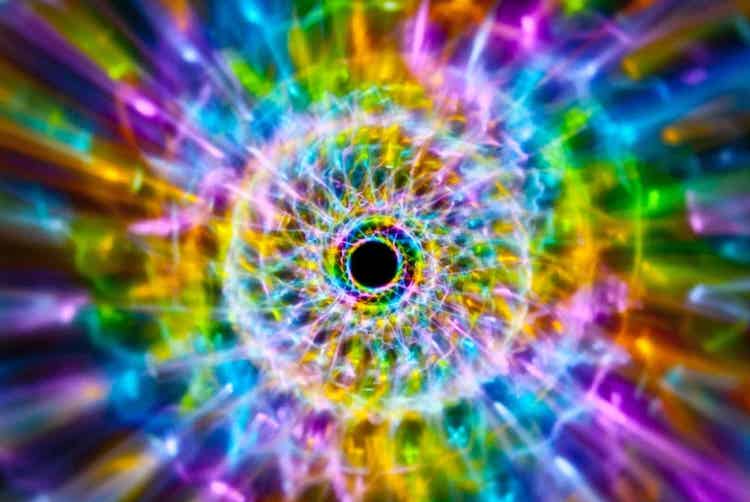
What Are Psychedelics? Are They Growing In My Garden?
A common question from people considering psychedelic therapy is “What are Psychedelics?”, but did you know they could be growing in your garden? While a large number of these drugs are still illegal for most people to possess, a number of them naturally occurring substances that have a psychedelic effect and are currently being investigated as potential medications. Depending on the climate where you live, they could be in your garden right now, but having said that, do no start eating strange random plants from your back yard. Many of them are easily confused with poisonous plants and if you don’t know how to identify them properly, you could end up with anything from a mild stomach ache to liver failure.
Table of Contents
What are Psychedelics?
Given the tumultuous history of these substances, it is worth understanding a bit about the history of these drugs before considering using them therapeutically. Frequently used in the 60’s for psychotherapy, psychedelic usage was stopped mainly for political reasons, and psychological research has recently revisited the use of psychedelics in experimental psychological treatment. Often thought of as an artifact of the Summer of Love, psychedelic drugs like psilocybin, LSD, peyote, and their more esoteric hallucinogenic siblings like DMT, ayahuasca and ibogaine are making their way back into mainstream culture.
Helped along by a stream peer-reviewed research from respected institutions like Johns Hopkins University and New York University focused on validating the therapeutic opportunities of psychedelic drugs, like ketamine, mescaline, LSD, psilocybin and DM, are a subcategory of hallucinogens that use serotonin receptor agonism to trigger psychedelic experiences that include:
- Thought/visual/auditory changes, and
- Altered state of consciousness, commonly characterized by a higher state relative to ordinary experience (Aghajanian, G (August 1999). “Serotonin and Hallucinogens”. Neuropsychopharmacology. 21 (2): 16S–23S. doi:10.1016/S0893-133X(98)00135-3.).
At a high level, psychedelics can be broken down into three categories:
- Serotonergic – The “popular” psychedelic drugs like LSD, DMT, and mescaline which cause changes in your sensory perception including hallucinations;
- Empathogens – influence serotonin releasing neurons, providing sense of euphoria, love in addition to increased attentiveness and awareness with relatively mild changes to
perception such as audio and visual stimuli; and - Dissociatives – induce depersonalization and derealization in users, who. Users feel disconnected from the world, their surroundings, and even their own bodies.
At a chemical level, psychedelics can be classified into one of three types of chemical compounds: tryptamines, phenethylamines, or lysergamides.
Multiple studies demonstrate that psychedelics are physiologically safe and do not lead to addiction. (Le Dain, Gerald (1971). The Non-medical Use of Drugs: Interim Report of the Canadian Government’s Commission of Inquiry. p. 106. Physical dependence does not develop to LSD) and that psychedelic substances, like psilocybin, when used in a psychotherapeutic setting may assist with treating depression as well as alcohol and nicotine addiction (Nichols, D. E. (3 February 2016). “Psychedelics”. Pharmacological Reviews. 68 (2): 264–355. doi:10.1124/pr.115.011478. PMC 4813425. PMID 26841800.) Also used in an attempt to mimic psychosis and exert mind control, it was never never demonstrated in the CIA’s Project MKUltra that they were particularly effective in doing either.
Acid, Lysergic Acid or LSD
LSD, a chemically synthesized hallucinogen developed from ergot, a mold that grows on rye grain. Widely used in the 1960s until it was made illegal, its use has continued while going through phases popularity. LSD alters awareness and perceptions and may also cause hallucinations. It is not chemically addictive but can cause some negative effects like anxiety and paranoia. During an acid trip, users experience a wide variety of effects, most often visual and other sensory distortions, changes to thought processes, intense emotions, including euphoria, and occasionally for some people, surprising new insights.

LSD binds more strongly to serotonin receptors than serotonin itself. When the molecules attach to receptors, amino acids within the receptor trap the molecules in place. An acid trip can be a lengthy process, lasting up to 8 to 12 hours but the experience can feel much longer due to the distortions in time associated with the drug. You may begin to feel the effects of one tab of acid within 20 to 90 minutes of ingesting the drug.
After your trip is over, you may experience “afterglow” effects for another six hours and it can take up to 24 hours before your body returns to its typical state of being. Traces of acid will be detectable in your urine for five days and in your hair follicles for 90 days after ingestion.
Acid trips tend to be quite tiring, and yet it may be difficult to eat or sleep, even during the latter stages of the trip. Food, when it can be tolerated, adequate fluid, and the company of calm, familiar, non-judgemental people can all help with easing the process of coming down from an acid trip.
Effects of LSD
While experienced LSD users enjoy the unpredictable nature of acid trips, those who dislike the unpredictable may find the experience disturbing because of the distortions in perception and thought that occurs. The emotions that accompany an acid trip can seem overwhelming and difficult to control, which can be pleasant if the trip is going well, but a bad trip is unpleasant and frightening for the person going through it. Visual distortions and hallucinations are central to the LSD experience and take a variety of forms including:
- The appearance of an overlay or outline of geometric or swirling patterns;
- A change in the perceived size or shape of objects;
- Static objects appearing to move, such as walls appearing to “breathe”;
- Sensory perceptions can get mixed up, resulting in synesthesia, which occurs when stimuli that are perceived through one sense are perceived through another, such as seeing sounds, or hearing smells; and,
- While visual distortions are by far the most commonly reported type of sensory distortion from LSD, hallucinations commonly happen and could include:
- Auditory hallucinations (hearing things that aren’t there);
- Tactile hallucinations (feeling things that are not there);
- Olfactory hallucinations (smelling things that are not there); and,
- Gustatory hallucinations (tasting things that are not there).
Negative Side Effects of LSD
Negative effects of acid use are thought to be a result of the stimulation of the sympathetic nervous system and include:
- Common Side Effects;
- Increased heart rate;
- Raised blood pressure
- Excessive sweating
- Serious side effects are hyperthermia (dangerously increase in body temperature), dehydration and rhabdomyolysis, a breakdown in muscles tissue that can cause kidney damage.
Dimethyltryptamine or DMT
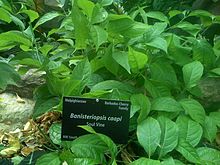
While less known than other psychedelics, DMT (N,N-Dimethyltryptamine), a hallucinogenic tryptamine drug, occurs naturally in the bark and nuts of certain Central and South American trees, such as Psychotria viridis and Banisteriopsis caapi. The intense visual and auditory hallucinogenic effects of DMT, a white crystalline powder, are much shorter than those of other psychedelics, typically lasting only an hour, leading users to label the drug the “businessman’s trip” or “businessman’s lunch”. Popularized by two researchers in the late 20th century, scientist Rick Strassman studied it extensively in the 1990s and gave it the nickname
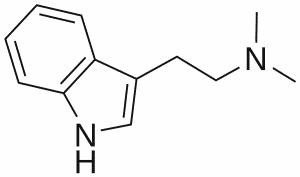
“the Spirit Molecule” due to the intense psychedelic experience. The chemical root structure of DMT is similar to sumatriptan, the anti-migraine drug, and it acts as a non-selective agonist the serotonin 5-ht2a receptor.
A Schedule I controlled substance in the United States, DMT is illegal to manufacture, buy, possess, or distribute and has no approved medical use in the United States. DMT use by researchers is possible under a Schedule I research registration which requires both Drug Enforcement Administration (DEA) and the Food and Drug Administration (FDA) approval .
Used for centuries by tribes in the Amazon basin, the tribes activate DMT in rainforest plants by brewing it in tea, called ayahuasca with MAOIs (which is necessary to make it active when ingested).
DMT is ingested in a number of ways:
- Smoking: When smoked, the average dose of DMT is between 30 to 150 milligrams (mg), and the onset of effects is almost instant. The effects peak and plateau for 3 to 5 minutes, and gradually drop off with the duration of effect totalling 30 to 45 minutes. When smoked, the intense visual and auditory hallucinations have been described as an alternate reality, otherworldly, or a near-death experience.
- Oral ingestion, in brewed teas like Ayahuasca: When consumed in liquid form, the dose is between 35 to 75 mg. Effects begin after 30 to 45 minutes, peak after 2 to 3 hours and are resolved in 4 to 6 hours.
- Snorted or injected
In comparison to other psychedelic drugs, such as LSD, ketamine, and magic mushrooms, recreational users of DMT consider it to have the lowest side effect profile. There is little evidence to suggest that it could cause chemical dependence or medical complications.
Side Effects of DMT
- Increased heart rate;
- Increased blood pressure
- Chest pain or tightness
- Agitation
- Dilated pupils
- Rapid rhythmic movements of the eye
- Dizziness
- Nausea, vomiting, and diarrhea when consumed orally
Morning Glory Seeds/LSA
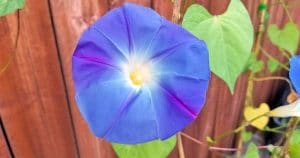
Growing world wide, morning glory seeds (Ipomoea violacea) which grow into a climbing vine with bright blue or purple trumpet-shaped flowers, known to Mexican natives as Ololiúqui or xtabentún, contain alkaloids which some may attempt to consume for a legal high. Used since ancient times in ritual ceremonies, the primary psychoactive substance in the morning glory plant is ergine, or D-lysergic acid amide (LSA), whose intoxicating effects similar to D-lysergic acid diethylamide (LSD). LSA/ergine—is also found in the seeds of Hawaiian baby woodrose (Argyreia nervosa), sleepy grass (Achnatherum robustum) and certain fungi. Morning glory was first known in China for its medicinal uses, due to the laxative properties of its seeds. Mesoamerican civilizations used the morning glory species Ipomoea alba to convert the latex from the Castilla elastica tree and also the guayule plant to produce bouncing rubber balls. The sulfur in the morning glory’s juice served to vulcanize the rubber. Aztec priests in Mexico were also known to use the plant’s hallucinogenic properties.
The psychoactive properties of LSA stem from its alkaloid makeup; examples of other plant-based alkaloids include caffeine, nicotine, cocaine, and morphine. Because LSA tends to exert a sedative effect on the user, you’ll find that some sources classify it as a depressant, in addition to a psychedelic.
Effects of Morning Glory Seeds/LSA
LSA is less potent than LSD and people report that LSA provides a less intense experience than LSD, and microgram for microgram, that’s true. An LSA trip can be somewhat unpredictable as most people don’t have the equipment or experience to determine precise doses. LSA effect, typically felt within 20 to 40 minutes, peak within 3 to 4 hours and disappear within about 8 hours, are usually:
- Sedation, relaxation, and a dream-like state of mind;
- Hallucinations;
- Visual distortions;
- Elevated mood; and,
- Sense of deep insight.
Side Effects of Morning Glory Seeds
Many people who use morning glory seeds experience uncomfortable symptoms before they even begin to feel high. While morning glory flowers may not be directly toxic, in large enough quantities, consuming the seeds can lead to side effects similar to LSD but with more severe, including:
- Gastrointestinal issues:
- Vomiting/nausea
- Diarrhea
- Cramping in the stomach, and
- Gas.
- Headache
- Rapid heart rate
- Increased blood pressure
- Dilated pupils
- Anxiety
- Paranoia, and
- Drowsiness
Ecstasy
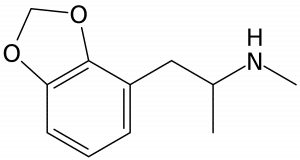
3,4-Methylenedioxymethamphetamine (MDMA), commonly known as Ecstasy (E) or Molly, is a psychoactive drug although is more difficult to categorize as a psychedelic because the mood-enhancing/stimulating effects are more noticeable than its psychedelics hallucinogen effects. Primarily acting by increasing the activity of serotonin, dopamine, and noradrenaline, MDMA belongs to the substituted amphetamine classes of drugs and has stimulant and hallucinogenic effects. MDMA has been described as an “empathogenic” drug because of its empathy-producing effects. Developed by Merck in the early part of the 20th century, it emerged psychotherapy in the 1970s and became popular as a street drug in the 1980s, commonly associated with dance parties and raves. Derived from amphetamine and structured similar to methamphetamine, it has a variety of street names including, XTC, Adam, M & M, E, and essence. As ecstasy is synthesized in laboratories, the purity varies substantially from lab to lab, and other compounds, like caffeine, ephedrine and ketamine are added into the same tablet.
Effects of Ecstasy
The onset of effects is typically within 30 to 60 minutes of oral consumption, peaking at 75 to 120 minutes post consumption, with a 3.5 hour plateau. The desired short-term psychoactive effects of MDMA, which depends on the dose, setting, and user, have been reported to include:
- Euphoria – a sense of general well-being and happiness
- Increased self-confidence, sociability, and perception of facilitated communication
- Entactogenic effects—increased empathy for others and oneself
- Relaxation and reduced anxiety
- Increased emotionality
- A sense of inner peace
- Mild hallucination
- Enhanced sensation, perception, or sexuality
- Altered sense of time
The impact of the environment on the variability of the altered state is lower compared to other psychedelics:
- At parties: associated with high motor activity, reduced sense of identity, and poor awareness of surroundings.
- Individually or in small groups: in a quiet environment and when concentrating, is associated with increased lucidity, concentration, sensitivity to aesthetic aspects of the environment, enhanced awareness of emotions, and improved capability of communication.
- In psychotherapeutic settings: patients demonstrate infantile ideas, mood lability, and memories and moods connected with childhood experiences.
Ecstasy Side Effects
Following MDMA use, people report feeling depressed and tired as well as
- Memory problems;
- Paranoia;
- Difficulty sleeping;
- Teeth grinding;
- Blurred vision;
- Sweating, and a rapid heartbeat; and,
- Increased body temperature and dehydration have been associated with users’ deaths.
Mescaline/Peyote
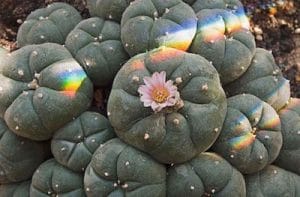
If you live in the desert, you might recognize this plant. Naturally occurring and found in certain species of cacti, the most well known being Peyote, mescaline, whose effects are similar to those of LSD, was popularized by Aldus Huxley in The Door of Perception. Peyote (Lophophora williamsii or Lophophora diffusa) is a small, spineless cactus used for about six thousand years by native tribes for religious and healing purposes. Due to the permissible non drug use of peyote in Native American Church ceremonies, the legal status of peyote can be easily misinterpreted; Peyote is a schedule 1 drug is therefore illegal. Anyone manufacturing peyote for the Native American Church, must register annually and comply with all other requirements of law. While mescaline, has a potential for psychological addiction, presents a low physical risk for healthy users an isn’t chemically addictive.
Effects of Mescaline/Peyote
Peyote’s effects often intensify when combined with substances like alcohol or stimulants, Mescaline, with its bitter taste, commonly causes vomiting as well as:
- Color enhancements;
- Euphoria; and
- Personal epiphanies on while on the drug.
PCP
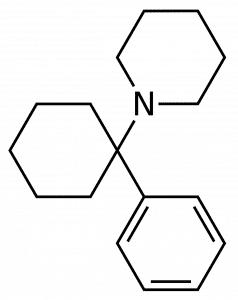
Phencyclidine, or PCP (“Angel Dust”, “Animal Trank”, “Rocket Fuel”), is a synthetic drug that also causes dissociative hallucinations. Originally synthesized as an anesthetic for medical use in the 1950s by Parke, Davis and Company and marketed under the trade name for the drug was Sernyl. In 1957 it was recommended for use in clinical trials on humans and later began to be utilized by veterinarians as an animal tranquilizer. Initially PCP had bright prospects as it provided effective anesthesia without negative effects to the heart and lungs. Having said that, its adverse side effects, including post-operative psychosis, severe anxiety and dysphoria (feeling of unease or general dissatisfaction), the drug was discontinued in 1965.
By 1967, the use of PCP was restricted to “veterinary use only” and rapidly gained popularity as an effective animal tranquilizer. Unlike other psychedelic drugs, PCP is considered to be moderately addictive, and there is some threat of developing psychological issues. The sale of PCP became illegal in the United States in 1978. Today, PCP in classified as a Schedule II substance; drugs under this classification have a high probability for abuse as well as the possibility that the user may become physically or psychologically dependent.
PCP is used for its mind-altering effects and can be snorted, swallowed, or smoked. Smoking PCP is the most common method, according to the Drug Enforcement Administration (DEA).
Ketamine
Ketamine is a precursor to PCP and was synthesized for the same purpose, as an anesthetic for use in surgeries. It can cause sedation and memory loss as a side effect and was later restricted to veterinary use. Its recreational use causes similar effects to PCP and it, too, has a low to moderate addiction potential. Read these articles to learn more about ketamine.
Psilocybin
Walk through any grassy or forested space in North, Central or South America, and there is a chance you could come across a psychedelic mushroom (warning, do not go hunting magic mushrooms without an experienced guide. Eating the wrong mushroom could kill you). Psilocybin is the main psychoactive ingredient in over 100 species of hallucinogenic mushrooms (also called “magic mushrooms” or “shrooms.” Although consumed for thousands of years, the compound wasn’t isolated until 1957 and it was produced synthetically a year later. Psilocybin and psilocin have been listed as Schedule I substances by the U.S. Drug Enforcement Association (DEA). Recent clinical trials used psilocybin to treat treatment-resistant anxiety and depression with relative success; As a result of this progress, the U.S. Food and Drug Administration (FDA) designated psilocybin as a “breakthrough therapy” in order to accelerate the drug development and review process.
For an extensive look at psychedelics and their impact on mental health, don’t miss our Ultimate Psychedelics and Mental Wellness Guide.
Still Curious About Growing Magic Mushrooms?
Check out these articles on Frshminds.
- Are Magic Mushroom Grow Kits Worth It?
- How Long Does It Take To Grow Magic Mushrooms
- Where Do Liberty Caps Grow and How to Get Them
- Growing Magic Mushrooms: Resources
- Growing Psychedelic Truffles
- How to Grow Penis Envy Mushrooms
- Wondering How To Grow Psilocybin Mushrooms?
- Psilocybe Semilanceata Cultivation

Comments